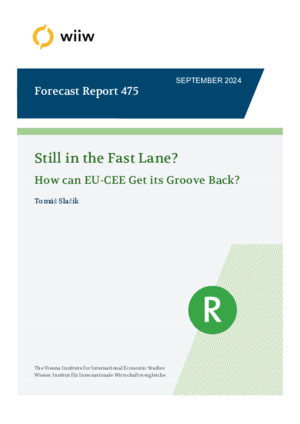Still in the Fast Lane? How can EU-CEE Get its Groove Back?
Tomáš Slačík
wiiw Research Report No. 475, September 2024
52 pages including 7 Tables and 27 Figures
This report revisits the growth and convergence performance of the 11 EU member states in Central, East and Southeast Europe (EU-CEE11) over the past few decades, examining the underlying drivers, structural changes and the outlook. The review aims to assess the sustainability of the current economic model and identify areas for economic policy to focus on boosting growth. The findings show that convergence has significantly slowed since the global financial crisis, with value added growth declining in virtually all industries. This slowdown is attributed to structural rather than cyclical factors, with total factor productivity (TFP) being the main driver as well as the primary culprit behind the deceleration. Since medium-term growth projections for the region are not optimistic, the EU-CEE11 countries must make substantial efforts to improve their economic models. Key areas to focus on include energy, underutilised labour and improving human capital. While still very competitive, the manufacturing sector needs to move towards higher value added activities.
Keywords: growth, convergence, growth model, EU-CEE11
JEL classification: E61, F15, F43, O47
Countries covered: New EU Member States
Research Areas: International Trade, Competitiveness and FDI
